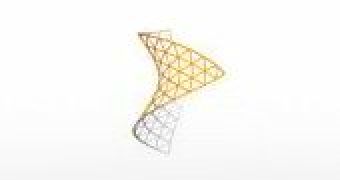Customers that have already embraced the latest iteration of Exchange Server now have available an update package designed to resolve any issues that survived past the RTM milestone. Exchange Server 2010 Update Rollup 2 is currently available for download, replacing Update Rollup 1, which was launched in mid-December 2009, two months after the product was released to manufacturing. Obviously, customers will need to be running Exchange Server 2010 before they apply Update Rollup 2. At the same time, the Redmond company advises users to remove all interim Exchange Server 2010 updates ahead of applying the latest update rollup.
“You may deploy Update Rollup 2 for Exchange Server 2010 to multiple computers that are running Exchange Server 2010. Or, you may deploy Update Rollup 2 for Exchange Server 2010 to mailbox servers that are part of a database availability group (DAG),” Microsoft stated. “Microsoft Update cannot detect update rollups on Exchange Server 2010 mailbox servers that are part of a database availability group (DAG).”
The software giant revealed that deploying Update Rollup 2 on Exchange Server 2010 machines that are not connected to the Internet could result in longer than normal installation times. According to the company, the message “Creating Native images for .Net assemblies” might also pop up. The explanation involves the need for the update to check the certificate revocation list repeatedly. Look-ups are performed for all assemblies that native image generation (NGen) compiles to native code. On computers cut off from the Internet, all checks must time-out before the installation process moves forward.
“To fix this problem, turn off the “Check for publisher’s certificate revocation” security option on the server that is being upgraded. To do this, follow these steps: in Internet Explorer, select Tools, select Internet Options, and then click the Advanced Tab. In the Security section, click to clear the Check for publisher's certificate revocation check box. Click OK to close the Internet Options dialog box,” the company explained.
Below is a list with all the fixes delivered by Update Rollup 2 for Exchange Server 2010, according to Microsoft:
“- 977633 (http://support.microsoft.com/kb/977633/) Certain third-party IMAP4 clients cannot connect to Exchange Server 2003 mailboxes through an Exchange Server 2010 CAS server; “- 979431 (http://support.microsoft.com/kb/979431/) The POP3 service crashes when a user connects to a mailbox through the POP3 protocol and the user is migrated from an Exchange Server 2003 server to an Exchange Server 2010 server; “- 979480 (http://support.microsoft.com/kb/979480/) Users cannot receive new messages if they access mailboxes that are moved to another Exchange Server 2010 RU1 server by using IMAP4 clients; “- 979563 (http://support.microsoft.com/kb/979563/) Exchange Server 2010 Push Notifications does not work; “- 979566 (http://support.microsoft.com/kb/979566/) A 0x85010014 error is generated when linked mailbox users try to synchronize their mailboxes with mobile devices in a CAS-CAS proxying scenario in Exchange Server 2010; “- 980261 (http://support.microsoft.com/kb/980261/) This fix introduces the supports for Exchange Server 2010 page patching when a ‘-1022’ disk I/O error is generated; “- 980262 (http://support.microsoft.com/kb/980262/) Event ID 2156 is logged on a computer that is running Exchange Server 2010.”
Exchange Server 2010 here.

 14 DAY TRIAL //
14 DAY TRIAL //